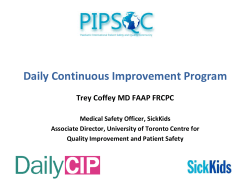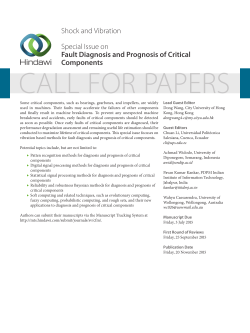
Implications of a Sarcopenia ICD-10 Code for Further Research and
Implications of a Sarcopenia ICD-10 Code for Further Research and Physicians in Practice Stephanie Studenski Director Longitudinal Studies Section Intramural Research Program National Institute on Aging April 2015 Agenda • What are the benefits of an ICD-10 Code for Sarcopenia? • Sarcopenia: Areas of Agreement among definitions • Use by Clinicians • Use by Researchers • Next Steps Why an ICD-10 Code? • Government recognition that sarcopenia is an important problem • Increase clinician awareness and attention to the problem • Progress toward acceptance of sarcopenia as specific condition which is an indication for treatment • Potential to influence public health and health policy Sarcopenia Definitions: Areas of Agreement • Shared conceptual framework • The condition involves low lean mass and weakness, with concurrent or future functional consequences • Requires a measure of lean mass, often by DEXA • Requires a measure of strength, by dynamometer or functional strength test • Diagnosis code for services during visit • Patient and family education for prevention and treatment • Code justifies evaluation for differential diagnostic possibilities • Diagnosis code for ordering tests (DXA, lab, EMG, further imaging.. • Diagnosis code for referrals (PT, nutrition..) • Approval for management in HMOs • Lean and fat mass by DEXA already available on many summaries Code Use by Clinicians Code Use by Researchers • If coded, data would be available on Electronic Medical Records, Death Certificates and other system data sources • Permits population estimates of epidemiology (incidence, prevalence, natural history by various demographic groups, relationships to conditions and health events) • Permits population estimates of outcomes (mortality, health care use) • Permits possible verification of code versus medical record information Next Steps • Comparisons and validation of various definitions in a wide range of populations who vary in setting, health status and function. • Develop estimates of meaningful change • Create valid indicators of muscle quality from tissue, imaging and functional data. • Pursue further mechanistic work on causation and mechanisms to support novel treatments and evidence-based differential diagnosis. • Work with professional organizations to develop practice guidelines.
© Copyright 2025















